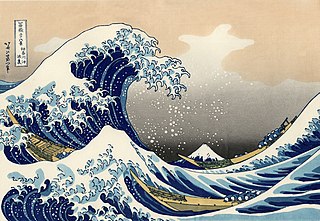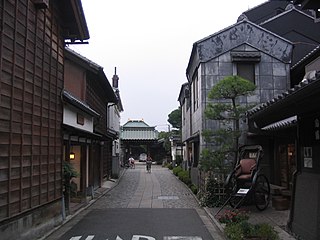
Kawagoe is a city in Saitama Prefecture, Japan. As of 1 February 2016, the city had an estimated population of 350,541, and a population density of 3,210 persons per km². Its total area is 109.13 km². The city is known locally as "Little Edo" after the old name for Tokyo, due to its many historic buildings.

Tokorozawa is a city located in Saitama Prefecture, Japan. As of 1 February 2016, the city had an estimated population of 335,968, and a population density of 4660 persons per km². Its total area is 72.11 square kilometres (27.84 sq mi).

Hannō is a city located in Saitama Prefecture, Japan. As of 1 February 2016, the city had an estimated population of 80,658, and a population density of 418 persons per km². Its total area is 193.05 square kilometres (74.54 sq mi).

Higashimatsuyama is a city located in Saitama Prefecture, Japan. As of 1 February 2016, the city had an estimated population of 91,520, with a population density of 1,400 persons per km². The total area is 65.33 km2 (25.22 sq mi).

Shiki is a city located in Saitama Prefecture, Japan. As of 1 February 2016, the city had an estimated population of 72,936, and a population density of 8060 persons per km². Its total area is 9.05 square kilometres (3.49 sq mi).

Wakō is a city located in Saitama Prefecture, Japan. As of 1 February 2016, the city had an estimated population of 80,666, and a population density of 7310 persons per km2. Its total area is 11.04 square kilometres (4.26 sq mi).

Fujimi is a city located in Saitama Prefecture, Japan. As of 1 February 2016, the city had an estimated population of 108,212, and a population density of 5470 persons per km². Its total area is 19.77 square kilometres (7.63 sq mi).
Kamifukuoka was a city in Saitama Prefecture, Japan.

Sakado is a city in Saitama Prefecture, Japan. As of 1 February 2016, the city had an estimated population of 101,638, and a population density of 2480 persons per km². Its total area is 41.02 square kilometres (15.84 sq mi).

Tsurugashima is a city in Saitama Prefecture, Japan. As of 1 February 2016, the city had an estimated population of 70,230, and a population density of 3,980 persons per km². Its total area is 17.65 square kilometres (6.81 sq mi).

Hidaka is a city located in Saitama Prefecture, Japan. As of 1 February 2016, the city had an estimated population of 56,454, and a population density of 1190 persons per km². Its total area is 47.48 square kilometres (18.33 sq mi).
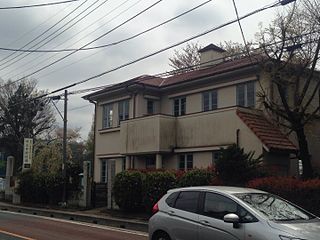
Ōi was a town located in Iruma District, Saitama Prefecture, Japan.
Iruma is a district located in Saitama Prefecture, Japan.

Miyoshi is a town located in Saitama Prefecture, Japan. As of 1 February 2016, the town had an estimated population of 38,438, and a population density of 2510 persons per km². Its total area is 15.33 square kilometres (5.92 sq mi).

Tsuruse Station is a railway station on the Tobu Tojo Line in Fujimi, Saitama, Japan, operated by the private railway operator Tobu Railway.
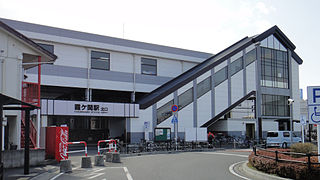
Kasumigaseki Station is a railway station on the Tobu Tojo Line in Kawagoe, Saitama, Japan, operated by the private railway operator Tobu Railway.

Fujimino Station is a railway station on the Tobu Tojo Line in Fujimi, Saitama, Japan, operated by the private railway operator Tobu Railway.
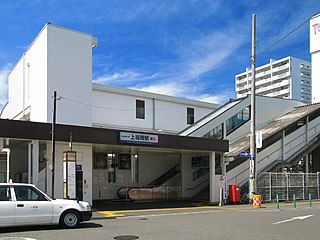
Kami-Fukuoka Station is a railway station on the Tobu Tojo Line in Fujimino, Saitama, Japan, operated by the private railway operator Tobu Railway.
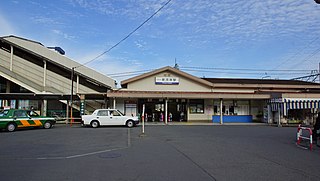
Shingashi Station is a railway station on the Tobu Tojo Line in Kawagoe, Saitama, Japan, operated by the private railway operator Tobu Railway.










